
German WWII E-75 mit 12.8cm L/55 “Tiger III Ausf.E”
The E-75 mit 12.8cm L/55 “Tiger III Ausf. E” was the most well-known and best-performing variant of the E-75 series, featuring enhanced protection, firepower, and advanced battlefield systems. Designed as the ultimate evolution of the heavy tank concept, this variant introduced a fully sloped, ballistic-resistant turret design, providing unmatched survivability against enemy anti-tank weaponry.
With a total production exceeding 1,000 units, the Tiger III Ausf. E became the most widely produced variant in the E-75 lineup, cementing its place as one of the most formidable late-war heavy tanks.
Design and Features
The Tiger III Ausf. E retained the core structure of the E-75 chassis, but featured:
- A fully sloped, ballistic-resistant turret, improving shell deflection and survivability.
- Primary armament options:
- 12.8cm L/55 cannon (40-round capacity), maximizing armor penetration and long-range lethality.
- 10.5cm L/68 cannon (60-round capacity), offering higher rate of fire and increased ammunition storage.
- Thickened frontal armor, making it one of the most heavily protected tanks in its class.
- Upgraded night-fighting capabilities, with most later-production units equipped with infrared night vision devices, enhancing combat effectiveness in low-light conditions.
Armor and Protection
The Tiger III Ausf. E was built to withstand even the most powerful enemy fire, incorporating:
- Frontal Armor: 160-200mm sloped, providing superior ballistic resistance.
- Side Armor: 100-120mm, with spaced armor to mitigate HEAT and AP rounds.
- Turret Armor: 180mm fully sloped, reducing penetration risk while maintaining structural integrity.
Combat Performance
With its powerful main gun, thick armor, and night-fighting capability, the E-75 Tiger III Ausf. E was highly effective in:
- Engaging enemy heavy tanks at long range, thanks to its high-velocity cannon.
- Urban and defensive warfare, utilizing its strong armor and superior firepower.
- Night operations, where its infrared optics provided a critical tactical advantage.
Operational Use
As the largest-produced E-75 variant, the Tiger III Ausf. E saw service in:
- Frontline breakthroughs, leading armored spearheads in offensive operations.
- Strategic defensive positions, where its heavy armor and long-range firepower made it a nearly impenetrable stronghold.
- Night combat scenarios, where it could engage enemies with greater effectiveness than conventional tanks.
Specifications
- Weight: 75-80 tons
- Armor:
- Frontal: 160-200mm sloped
- Side: 100-120mm
- Turret: 180mm fully sloped
- Primary Armament:
- 12.8cm L/55 (40 rounds) OR
- 10.5cm L/68 (60 rounds)
- Secondary Armament: Coaxial and hull-mounted MG34 machine guns
- Mobility:
- Engine: Maybach HL 234, 1,200 hp
- Top Speed: 40 km/h (road), 30 km/h (off-road)
- Range: 180 km
- Additional Features: Infrared night vision (most later variants)
- Production Quantity: 1,000+ units
- Role: Heavy assault tank, strategic armored spearhead, night combat operations
Legacy
The E-75 mit 12.8cm L/55 “Tiger III Ausf. E” became the definitive version of the E-75 series, setting the standard for heavy tank design in its era. Its combination of firepower, armor, and advanced optics made it a lethal battlefield force, influencing post-war armored development and solidifying its place in mechanized warfare history.
Note: This introduction is based on the Fist of War (FoW) alternate history background and is not a depiction of real-world historical events.
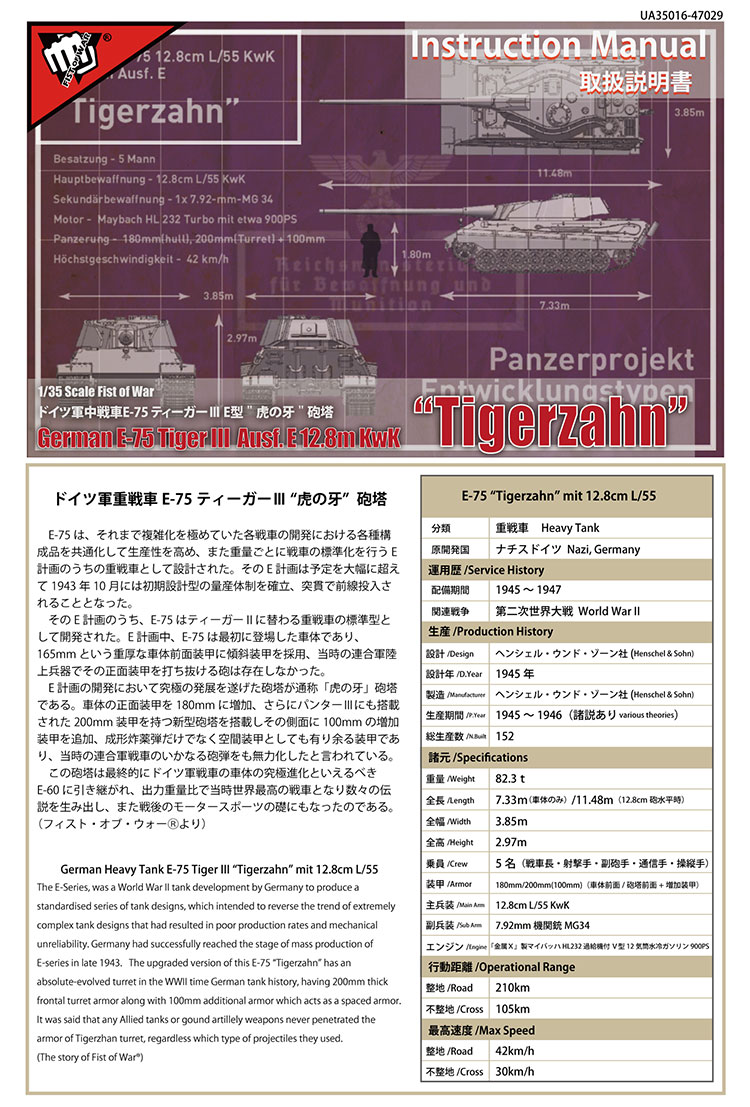
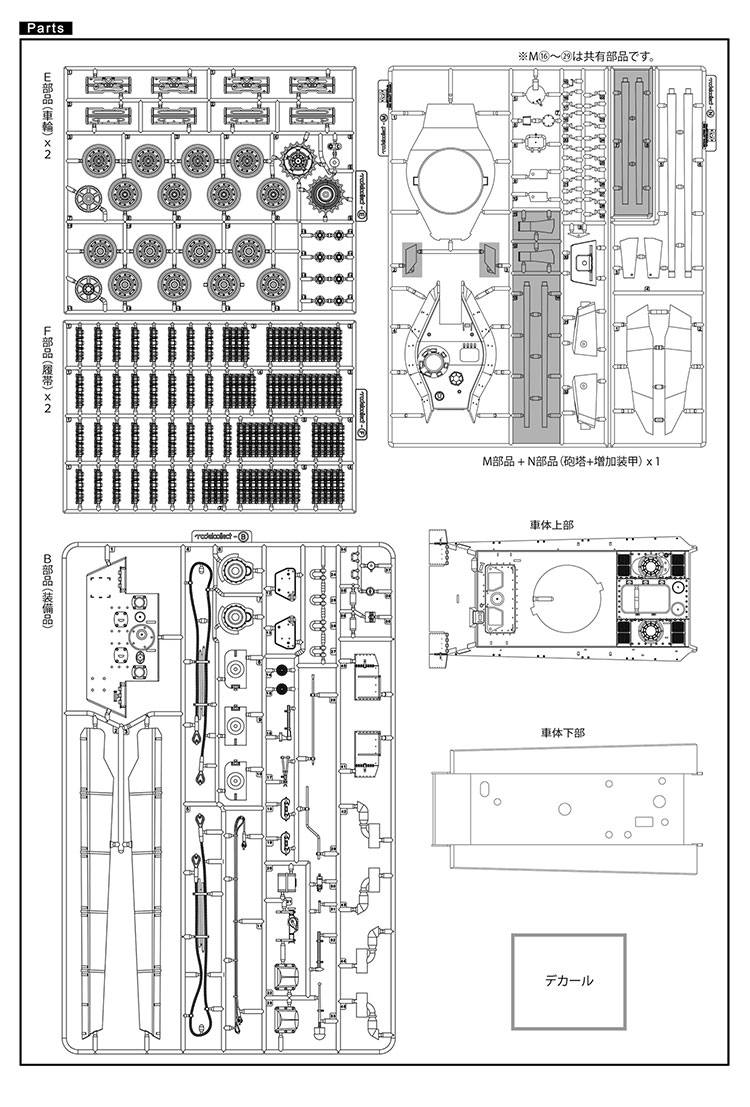
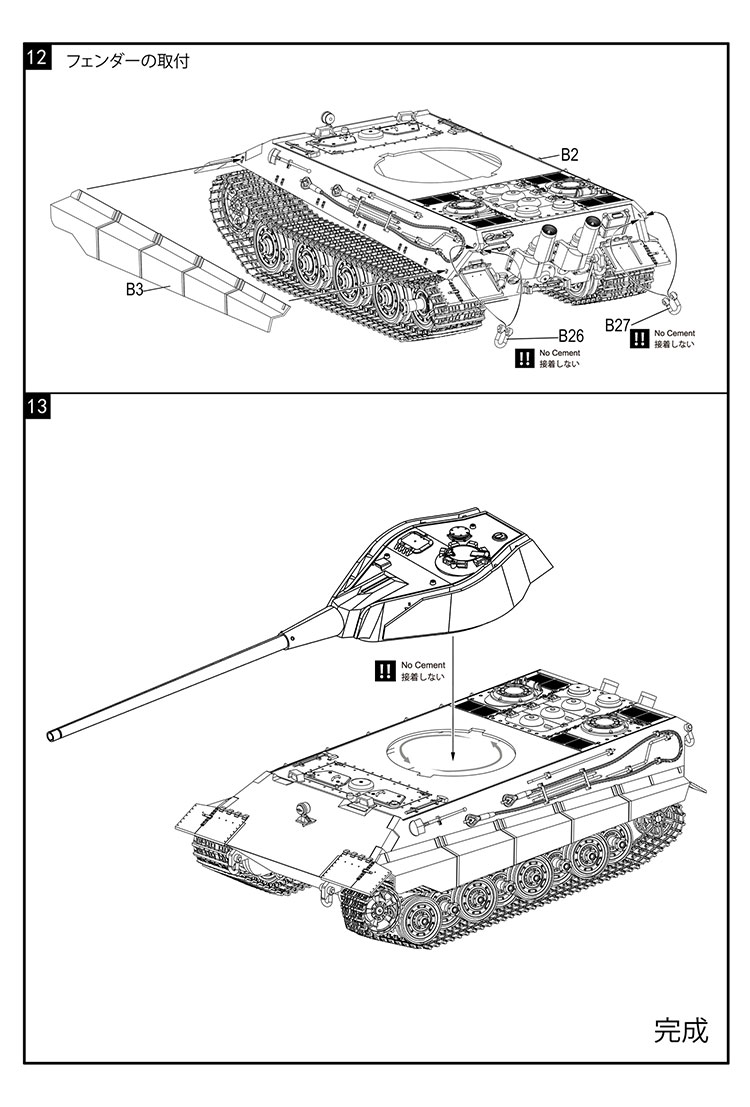
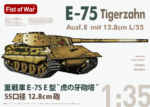
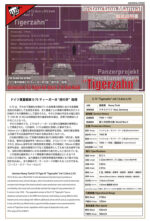
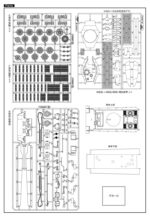
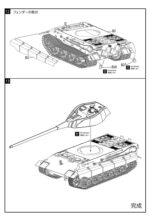
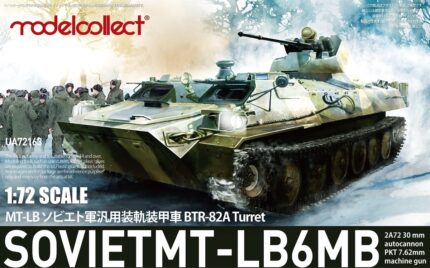
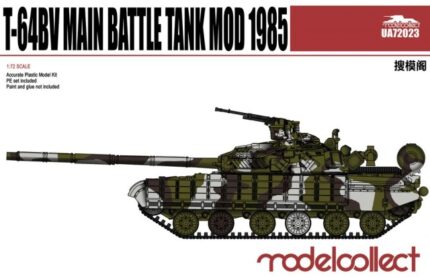
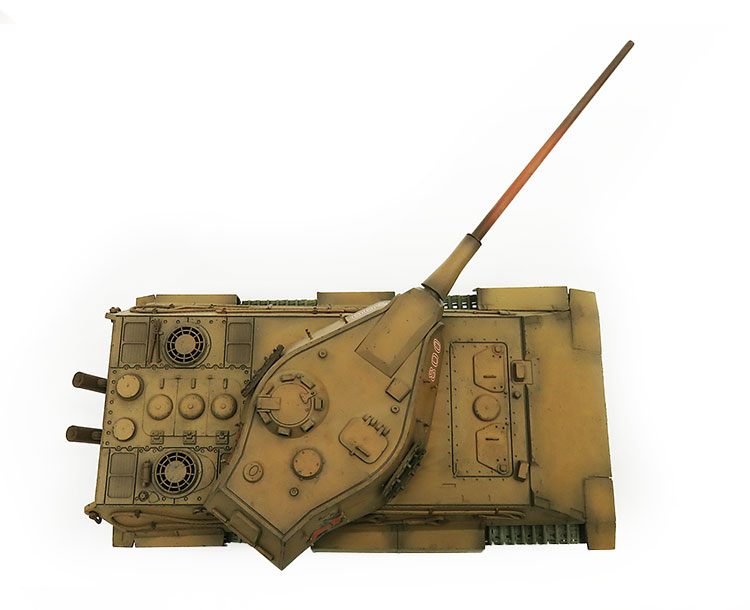

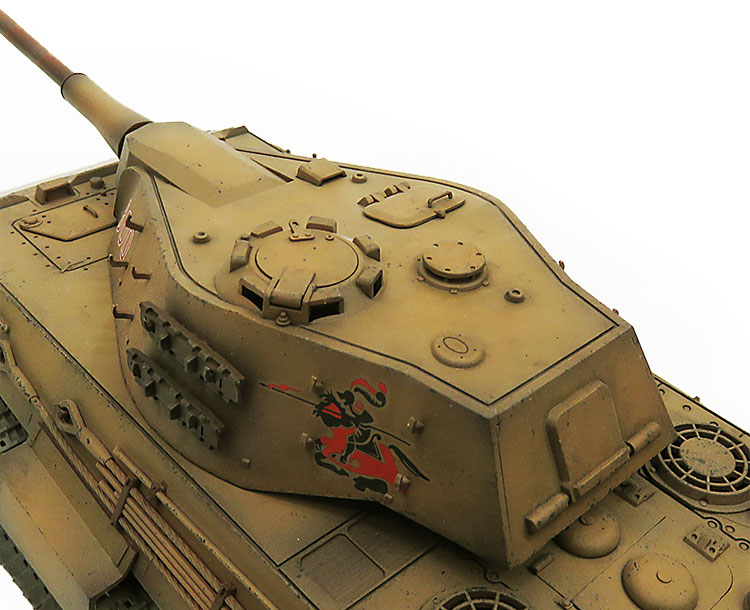




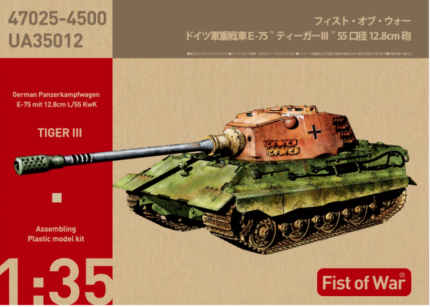
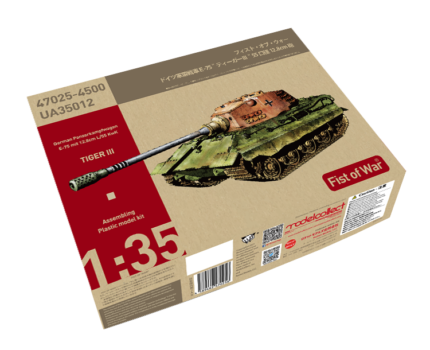
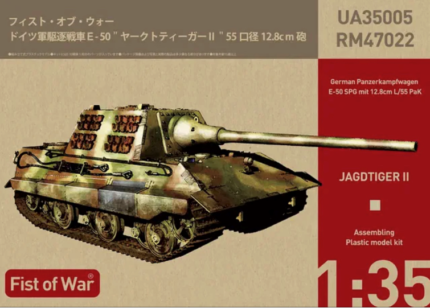
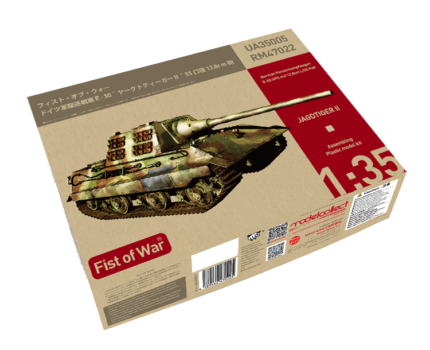
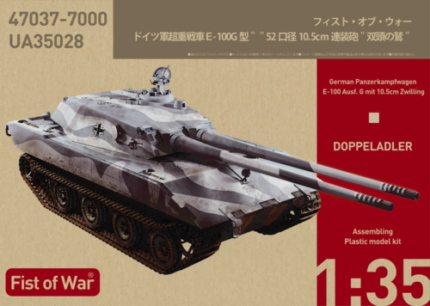


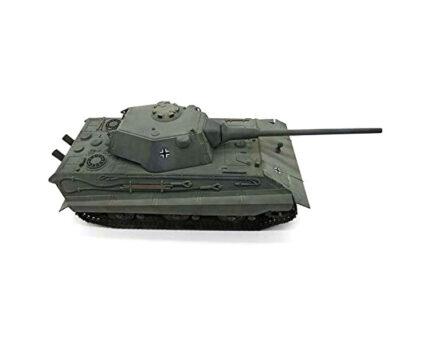
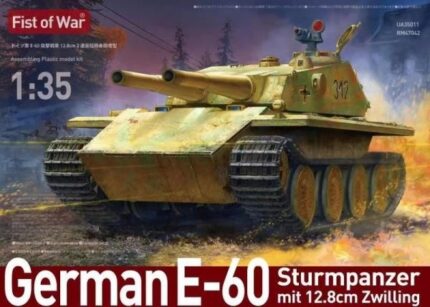
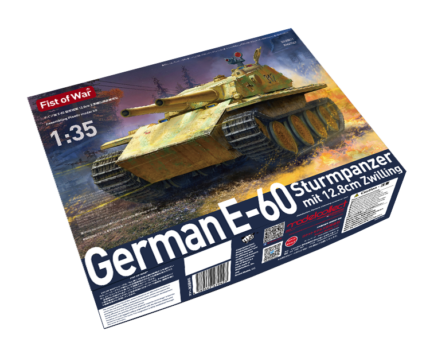
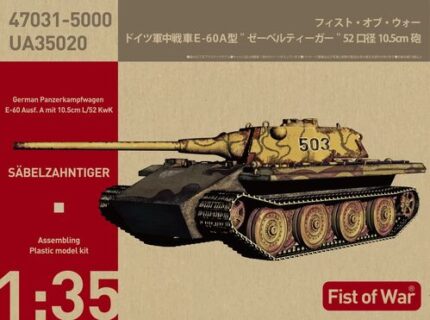

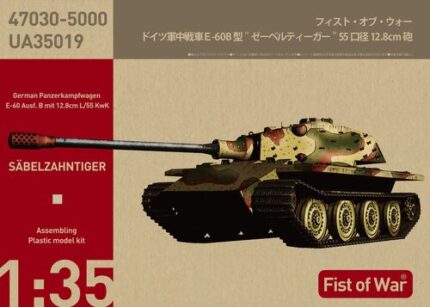
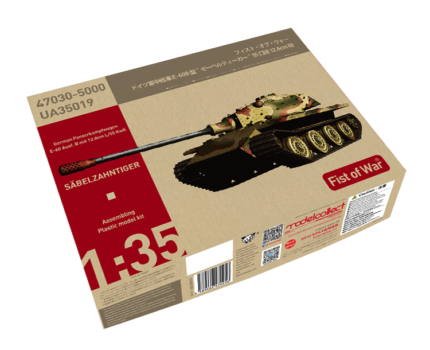

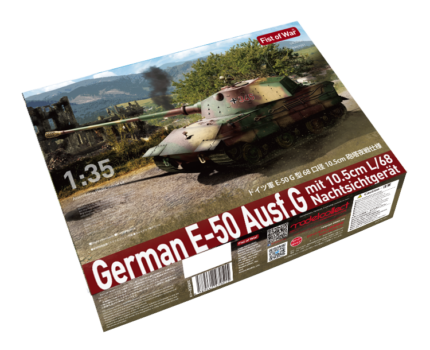

Reviews
There are no reviews yet.